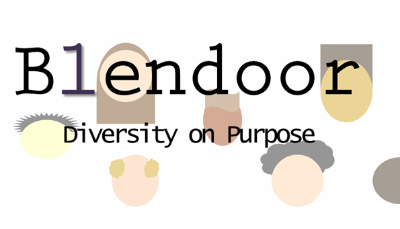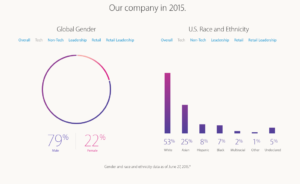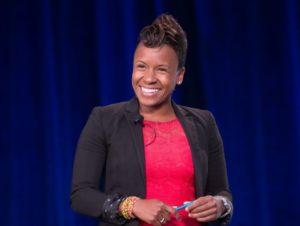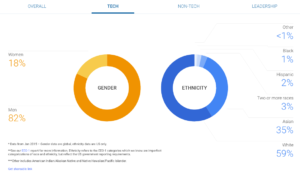 Because most of the quickly growing companies and startups that tend to dominate it emerged from the maker community, the 3D printing industry often seems to find itself a little sequestered from the rest of the tech industry. Part of the reason is that very few of the industry’s largest companies started or are even based in Silicon Valley. While there is more to the tech industry than Northern California, it is often treated like the popular kids’ lunch table: everyone wants to sit there, and those that are tend to ignore those that aren’t. Sure most of the world’s large tech shows and conferences include plenty of 3D printing these days, but there still isn’t as much crossover as you’d expect, and 3D printing is still treated like that weird cousin who you’re not exactly sure is going to amount to anything.
Because most of the quickly growing companies and startups that tend to dominate it emerged from the maker community, the 3D printing industry often seems to find itself a little sequestered from the rest of the tech industry. Part of the reason is that very few of the industry’s largest companies started or are even based in Silicon Valley. While there is more to the tech industry than Northern California, it is often treated like the popular kids’ lunch table: everyone wants to sit there, and those that are tend to ignore those that aren’t. Sure most of the world’s large tech shows and conferences include plenty of 3D printing these days, but there still isn’t as much crossover as you’d expect, and 3D printing is still treated like that weird cousin who you’re not exactly sure is going to amount to anything.
I certainly can’t speak for everyone, but it almost feels as if being off in its own corner has been good for 3D printing. It has allowed a culture that thrives on open source technology and software to take root, and proven that businesses don’t need excessive patents to be successful if they build their companies correctly. In reality, 3D printing, despite being tech- and software-driven, probably has more in common with the manufacturing industry than high tech. However for all of its varied differences, the 3D printing industry does share one thing with most of the big tech companies in the world, it has a bit of a diversity problem.
The fact is, unless a company specifically puts a mechanism in place to seek out a diverse workforce, the people doing the hiring tend to hire people from similar backgrounds, leading to the eventual workforce to look an awful lot alike. With less money to go around, and by being cut off from the socially aware culture that is starting to spring up in and around Silicon Valley, most startups simply can’t afford to build that diversity mechanism, nor are they ever really put under any pressure to prioritize it. There is so little pressure that there aren’t even any figures or datasets tracking diversity specifically within the 3D printing industry. I can find piles of information about diversity throughout the high tech industry in general, but nothing specific to 3D printing. Without any data, we just don’t know to what degree there is a problem, much less how to address it.
Of course another problem with fostering a diverse workforce is the resistance to do so from the people who often work within the industry. There are still an uncomfortable amount of people who believe that men simply have a natural edge over women when it comes to working with and developing technology, as if there were some sort of biological difference. That is of course nonsense, for one the differences between the male and the female brain are widely considered superficial, and a biological difference wouldn’t explain the same lower rates of people of color or varied sexual orientations in the tech field. As I said, there are reams of data for the tech industry as a whole that make it clear that if you’re not a heterosexual white male, you’re simply going to have more trouble finding a tech job.
That’s where a new startup called Blendoor could be a useful tool. Founder and CEO Stephanie Lampkin developed the Blendoor app to be a merit-based skill-matching app that will allow employers to see only relevant information about a potential hire, including job history, education and relevant skills. It was designed as an alternative to LinkedIn, and by removing gender, race or sexual orientation from the equations typically used when considering a new applicant, companies can quickly and easily assemble a pool of potential hires based entirely on their ability to do the job before they ever see a name or a face. That will allow a more diverse number of applicants to get through the first early rounds of screenings, and be taken more seriously once there is a face to face interview.
Crucially, Blendoor isn’t specifically an app for women or minorities, it is open to everyone, and the company encourages white males to submit their details. In order for the app to work correctly, the pool of workers available to employers through Blendoor needs to be as diverse as possible, in every way. Not only are diverse workforces better for minorities, but it’s better for everyone across the board. Companies that have more diverse workforces have a much larger pool of experiences and points of view to draw from, which makes it easier to catch blind spots in product development or user experience. The world in general is becoming more socially conscious and it wants products that weren’t created with only a specific, homogeneous group of users in mind.
We may not want to admit it, but the problem is ultimately a cultural one. And many of the very people who shape that culture often don’t even consider that they’re doing so. It is doubtful that there is any malice at the heart of it, it’s more than likely a side effect of the 3D printing industry being made up primarily of former startups, where you have no choice but to make do with what you have access to. It isn’t uncommon for a startup to be more willing to draw from a limited pool of friends and former co-workers than cast a wide net looking for diverse hires. Not only does it take less time, it also costs less money, two things that are often in short supply for a new company.
There have been countless studies that prove the existence of unconscious biases when hiring. Typically, “white” or male sounding names tend to get passed through the first few steps of consideration over ethnic names or women applicants. Many of these applicants tend to get passed over in greater numbers early on in the hiring process, never being given an opportunity to dispel any unconscious biases. Honestly, the idea of building a company from the ground up as specifically being diverse in gender and race is probably not even considered, much less a priority for most startups. After all, diversity is something that you worry about when you’re Google or Apple, not when you’re a company that first started selling 3D printers from your garage and only recently moved into an off-site warehouse.
Blendoor is also an excellent way to counter one of the most commonly used arguments against diversity, the idea that hiring is already just merit-based and women and minorities can’t keep up. The suggestion is that when companies have drives for diversity and specific quotas then more qualified white men are getting passed over in favor of less qualified minorities. There is of course no evidence that when minorities are chosen for a position over a white male that they will be less qualified. Frankly, most resumes and job applications for the same position will look remarkably similar. And if the process really is entirely merit-based already, why not use an app that guarantees that it is entirely merit-based?
The conceit behind Blendoor, and the reason why it should be an attractive option for 3D printing startups, is that the app can both reduce the amount of time required for companies to screen applicants, and reduce the cost of hiring people to specifically build a diverse workforce. And it is actually easier and ultimately much less expensive to start from the ground up when putting together a diverse workforce than it is to try and make an already homogeneous workforce more diverse.
The 3D printing industry is at an important point in its development. In many ways it is still the small, scrappy emergent technology that is just finding out what it wants to be. But it is also poised right on the edge of beginning a manufacturing revolution that hasn’t been seen since the steam engine was invented. At this point, the industry isn’t so big that diversity has to be a burden or a problem that needs to be fixed, it can simply be part of the industry as built from the ground up. It simply needs to be treated as a priority now, rather than something that is put off until the company reaches the size of Google. Blendoor is not the only way to foster diversity, it may not even be the correct way for your company to do so, but it is a place to start. It is a way to keep your company honest, and make sure that it is growing and developing into a company that is welcoming for everyone to help you build, not just those that look like you. Discuss further in the Blendoor Helps with 3D Printing Startup Hiring forum over at 3DPB.com.
[Source: Business Insider Australia]
Subscribe to Our Email Newsletter
Stay up-to-date on all the latest news from the 3D printing industry and receive information and offers from third party vendors.
You May Also Like
3D Printing News Briefs, April 13, 2024: Robotics, Orthotics, & Hypersonics
In 3D Printing News Briefs today, we’re focusing first on robotics, as Carnegie Mellon University’s new Robotics Innovation Center will house several community outreach programs, and Ugogo3D is now working...
Rail Giant Alstom Saves $15M with 3D Printing Automation Software 3D Spark
3D Spark has entered into a three-year deal with the rail giant Alstom. Alstom, a transport behemoth with annual revenues of $16 billion, specializes in the manufacture of trains, trams,...
Meltio Expands Global Reach with New Partnerships in the Americas and Europe
Spanish 3D printing manufacturer Meltio has expanded its sales network across the globe. With the addition of three new partners in the United States, Brazil, Argentina, and Italy, Meltio aims...
3D Printing Webinar and Event Roundup: April 7, 2024
Webinars and events in the 3D printing industry are picking back up this week! Sea-Air-Space is coming to Maryland, and SAE International is sponsoring a 3D Systems webinar about 3D...


































